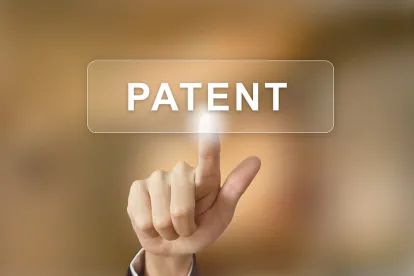In its Final Written Decision, the Board found that Petitioner had shown by a preponderance of the evidence that the challenged claims of the ‘944 patent are unpatentable under 35 U.S.C. § 103. The ‘944 patent “relates to backing up and restoring file systems” by “copying information describing changes in the file system since a previous point in time.”
The Board first dismissed as moot Patent Owner’s motion to exclude exhibits filed with the Petitioner’s Reply because the Board did not need Petitioner’s additional arguments or evidence to find the claims unpatentable. The Board next denied Patent Owner’s motion to exclude a user’s guide as unauthenticated pursuant to Federal Rule of Evidence 901. Petitioner “provides reasons why it contends SM Guide is self-authenticating under Rule 902” and “points out testimony that is sufficient to authenticate the document pursuant to Rule 901(b)(1).” The Board further denied Patent Owner’s motion to exclude the supplemental declaration of Petitioner’s expert as inadmissible hearsay. The supplemental declaration “consists of statements made by the Declarant while testifying in this proceeding — not ‘hearsay’ (Fed. R. Evid. 801(c)) — but sworn testimony that is subject to cross-examination.” Indeed, “Patent Owner cross-examined [the declarant] with respect to that testimony.” Finally, the Board denied Patent Owner’s motion to exclude the declaration of Petitioner’s expert because the “motion does not specify the basis for any evidentiary objection to the [the declaration].”
The Board next addressed the prior art status of the SM Guide under 35 U.S.C. § 102. The Board disagreed with Patent Owner’s contention “that Petitioner cannot rely upon evidence not submitted with the Petition to show that SM Guide is prior art.”
In Patent Owner’s view, Petitioner must make out a prima facie case of unpatentability in its Petition, which includes the substantive element of SM Guide being publicly accessible and prior art. Id. at 4. That position, however, does not account for the difference between the threshold for instituting a trial (35 U.S.C. § 314(a)) and that for proving unpatentability of a claim in trial (35 U.S.C. § 316(e)). As noted by our reviewing court, “there is a significant difference between a petitioner’s burden to establish a ‘reasonable likelihood of success’ at institution, and actually proving invalidity by a preponderance of the evidence at trial.” TriVascular, Inc. v. Samuels, 812 F.3d 1056, 1068 (Fed. Cir. 2016) (quoting 35 U.S.C. § 314(a) and comparing § 316(e)).
In considering all the proffered evidence, the Board found that “Petitioner has established, by a preponderance of the evidence, that SM Guide (dated Oct. 2008) was available to the interested public at least more than one year before July 15, 2010, the earliest possible priority date of the ʼ944 patent.”
The Board next turned to the patentability challenges after finding that no claim terms needed construction. The Board found that:
[T]he Petition provides ample reasons why one of ordinary skill in the art would have combined the teachings of SM Guide, Edwards, and Patterson. Pet. 21‒23. For example, all the references address the problem of reducing the time to restore a backup copy of an organization’s file system. Pet. 21 (citing Declaration of Erez Zadok, Ex. 1115 ¶ 93). Sanders, Edwards and Patterson all address the problem using the same solution—virtual file systems. Id. (citing Ex. 1115 ¶ 95‒97). SM Guide and Edwards teach creating virtual file systems use the same underlying NetApp technologies: Snapshot, SnapMirror, and FlexClone technologies incorporated into the Data ONTAP operating system. Pet. 22‒23 (citing Ex. 1115 ¶¶ 95‒97). Moreover, Edwards expressly refers to the earlier Patterson reference for details relating to how to use SnapMirror for replication.
The Board agreed with Petitioner “that although the claims require a ‘plurality of point-in-time copies of a source file system,’ nothing in the claims requires that the point-in-time copies be with respect to the source file system as it exists when the copies are mirrored to the destination or when the data blocks are extracted. All challenged claims were found unpatentable.
Actifio, Inc. v. Delphix Corp., IPR2015-00052
Paper 58: Final Written Decision
Dated: March 31, 2016
Patent: 8,548,944 B2
Before: Howard B. Blankenship, Karl D. Easthom, and Minn Chung
Written by: Blankenship
Related proceedings: Delphix Corp. v. Actifio, Inc., No. 13-4613-BLF (N.D. Cal.); IPR2015-00050.



 />i
/>i


